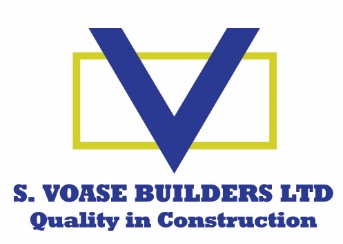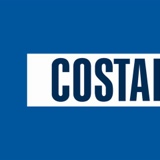Title Page
-
Report No.
-
Project No.
-
Project
-
Conducted on
-
Client
-
Prepared by
-
Location
-
Site Manager/Supervisor
1. Welfare & First Aid Provisions
-
1.1 Are toilets readily available?
-
1.1.1 Are the toilets cleaned regularly?
-
1.1.2 Are soap & hand towels available?
-
1.2 Is a canteen or place available for workers to sit/rest & make hot drinks & prepare food?
-
1.2.1 Are the canteen facilities adequate & cleaned regularly?
-
1.2.2 Is drinking water provided with cups?
-
1.2.3 Is a kettle and microwave available for workers to use?
-
1.3 Are workers who need to use the welfare facilities able to get to them easily & safely?
-
1.4 Is a drying room provided for those who have to work in the wet?
-
1.5 Is a fully stocked first aid kit readily available including eye wash solution?
-
Is there signage indicating the location of the first aid kit?
2. Planning & Managerial Controls
-
2.1 If the project is notifiable is the F10 displayed on site?
-
2.2 Is the construction phase plan in place and available?
-
2.3 Is the Health and Safety Notice Board on site & inclusive of information in accordance with company standards?
-
The board should at a minimum include the following information - H&S law poster, H&S Policy Statement, Insurance, Emergency Contacts, First Aid Box, Construction Phase Plan, RAMS, Hospital 'Grab & Go'
-
2.4 Is the Site File in place?
-
2.5 Is an R&D asbestos survey in place & on site?
-
2.6 Are site inductions taking place & documented?
-
2.7 Is an emergency plan in place for fire & evacuation?
-
2.8 Is signing in & out register in use?
-
2.9 Are permits for high risk activities completed?
-
2.9.1 Are an adequate number of blank permit forms available?
-
2.9.2 On completion of the high risk activity is the permit cancelled & filed on site?
-
2.10 Is the daily dairy been completed and filed on site?
-
2.11 Is the site manager/supervisor weekly H&S checklist been completed and filed on site?
-
2.12 Are accidents & near misses reported and investigated?
-
2.13 Are risk assessments & method statements on site?
-
2.13.1 Are RAMS signed by operatives?
-
2.13.2 Are RAMS in place for all activities undertaken on site at time of inspection?
-
2.13.3 Are the RAMS scheme specific with controls put in place?
3. Site Safety Controls
-
3.1 Are the works adequately secured or segregated to prevent unauthorised access?
-
3.1.1 Where the site is secured with perimeter fencing (Heras etc) is the fencing checked regularly and inspections recorded on the hoarding check register?
-
3.2 Are there sufficient H&S warning signs in place?
-
3.3 Where applicable are on site hazardous substances & materials been identified with precautions in place?
-
3.4 Where applicable have adequate & separate pedestrian, vehicle access points & routes around the site been provided?
-
3.5 Are pedestrian circulation routes clear & unobstructed?
-
3.6 Are there sufficient fire extinguisher points on site?
-
3.7 Is there an adequate means of raising the alarm in case of emergency?
-
3.8 Is the working environment satisfactory in relation to ventilation, temperature, light, noise, dust & fumes?
-
3.9 Are excavations taking place on site?
-
3.9.1 Are excavation permits in use?
-
3.9.2 Are excavations inspected by a competent person?
-
3.9.3 Are excavations protected or segregated with barriers where people are liable to fall into them?
-
3.9.4 Are excavations adequately shored?
-
3.9.5 Are spoil heaps located a suitable distance from excavations?
-
3.9.6 Is there safe access into the excavation, e.g a sufficiently long & secured ladders?
4. Storage Areas
-
4.1 Are materials stored and stacked safely without the danger of slipping, rolling, falling etc?
-
4.2 Are flammable liquids or gases stored on site?
-
4.2.1 Is there a separate storage area/s for flammable liquids & gases?
-
4.2.2 Is the storage area/s for flammable liquids & gases lockable and away from buildings & sources of combustible materials?
5. Work at Height
-
5.1 Are adequate controls in place to prevent falls including falls through fragile surfaces?
-
5.2 Are pole & system scaffolds in use on site (incl. edge protection)?
-
5.2.1 Are pole & system scaffolds erected, altered & dismantled by a competent person?
-
5.2.2 Is the scaffold a standard configuration within the scope of TG20:13 or within the manufacturers guidance?
-
5.2.2.1 Has a competent person provided a scaffold design?
-
5.2.3 Does a competent person inspect the scaffold regularly, e.g. at least once a week and always after it has been altered, damaged and following extreme weather?
-
5.2.4 Are findings of the scaffold inspections recorded?
-
5.2.5 Are there effective controls or warning notices in place to stop people using incomplete scaffolds?
-
5.2.6 Are there double guardrails and toe boards, or other suitable protection, at every edge, to prevent falling?
-
5.2.7 Are scaffold brick guards and netting provided where necessary?
-
5.2.8 Are working platforms fully boarded, and are the boards arranged to avoid tipping and tripping?
-
5.2.9 Are loads evenly distributed on the scaffold and is the scaffold strong enough to carry the weights?
-
5.2.10 Are access ladders in good condition and secured to preventing slipping and rise sufficiently above landing height?
-
5.2.11 Are access ladders removed or guarded at the end of the shift to prevent unauthorised access?
-
5.3 Are tower scaffolds in use on site?
-
5.3.1 Are towers erected and dismantled by PASMA trained operatives?
-
5.3.2 Are the tower scaffold manufacturers instructions available?
-
5.3.3 Are tower scaffolds been erected and used as per the manufacturer instructions?
-
5.3.4 Are the towers in use fit for purpose & undamaged?
-
5.3.5 Are those working off tower scaffolds working in a safe manner?
-
5.4 Are step ladders or hop ups evident on site or in use on site?
-
5.4.1 Are those working off steps ladders or hop ups working in a safe manner?
-
5.4.2 Are steps either Class 1 or BS EN131 rated?
-
5.4.3 Are step ladders and hop ups well maintained and in a satisfactory condition?
-
5.5 Are MEWPS in use on site?
-
5.5.1 Do those operating MEWPs hold relevant training cards such as IPAF?
-
5.5.2 Is a 6 monthly thorough examination report available with the MEWP/s?
-
5.5.3 Are MEWPs been operated in accordance with manufacturers instructions?
-
5.6 Are fall from height soft landing systems in use on site?
-
5.6.1 Are safety nets in use?
-
5.6.1.1 Is the netting installation handover certificate on site?
-
5.6.1.2 Is netting inspected daily and records of findings kept on site?
-
5.6.1.3 Is a competent person inspecting the netting weekly with inspection logged on site?
-
5.6.1.4 Is safety netting free of debris and material where persons are at risk of falling?
-
5.6.1.15 Is a written rescue plan in place for anyone who may fall into safety netting?
-
5.6.2 Are air bags in use?
-
5.6.2.1 Are air bags installed without gaps and in accordance with suppliers instructions?
-
5.6.2.2 Are air bags free of debris and material where persons are at risk of falling?
-
5.6.2.3 Is a written rescue plan for the air bag system in place?
-
5.7 Is fall arrest or restraint equipment in use?
-
5.7.1 Is fall arrest or restraint equipment been used correctly?
-
5.7.2 Is the fall arrest or restraint equipment in good order & free from defects?
-
5.7.3 Are those using fall arrest or restraint equipment trained to do so?
-
5.7.4 Is a written rescue plan in place for fall arrest or restraint equipment?
-
5.7.5 Is fall arrest & restraint equipment regular inspected & stored safely?
6. Plant & Equipment
-
6.1 Is all plant and equipment maintained and in good order?
-
6.2 Are those operating plant & equipment working safely?
-
6.2.1 Do all those operating plant such as dumpers, excavators, forklifts hold relevant training cards?
-
6.3 Are certificates of conformity available and held on site for plant?
-
6.4 Is there evidence that portable electrical equipment is PAT tested?
7. Personal Protective Equipment
-
7.1 Are operatives observing mandatory PPE requirements?
-
7.2 Are those required to wear additional PPE (RPE, gloves, hearing protection etc.) wearing it?
-
7.3 Is PPE that is in use, in good condition and readily available to those that need it?
8. Training
-
8.1 Have those who are likely to disturb the fabric of the building undertaken asbestos awareness training?
-
8.2 Are tool box talks encouraged and taking place with evidence of attendance?
9. Housekeeping
-
9.1 Are work areas regularly removed of waste and debris?
-
9.2 Are protruding nails in timber etc. removed or bent over and stored safely?
-
9.3 Are trailing leads kept to a minimum to minimise trip and slip hazard?
-
9.4 Where necessary are there bins provided for waste collection on site?
10. Environmental
-
10.1 If in use are fuel storage tanks bunded with drip trays available?
-
10.1.1 Is the fuel storage tank located away from drains & water courses?
-
10.2 Are spill kits available and adequate to control any foreseeable spills or leaks risks?
-
10.3 Are waste skips available and waste consignment notes available?













